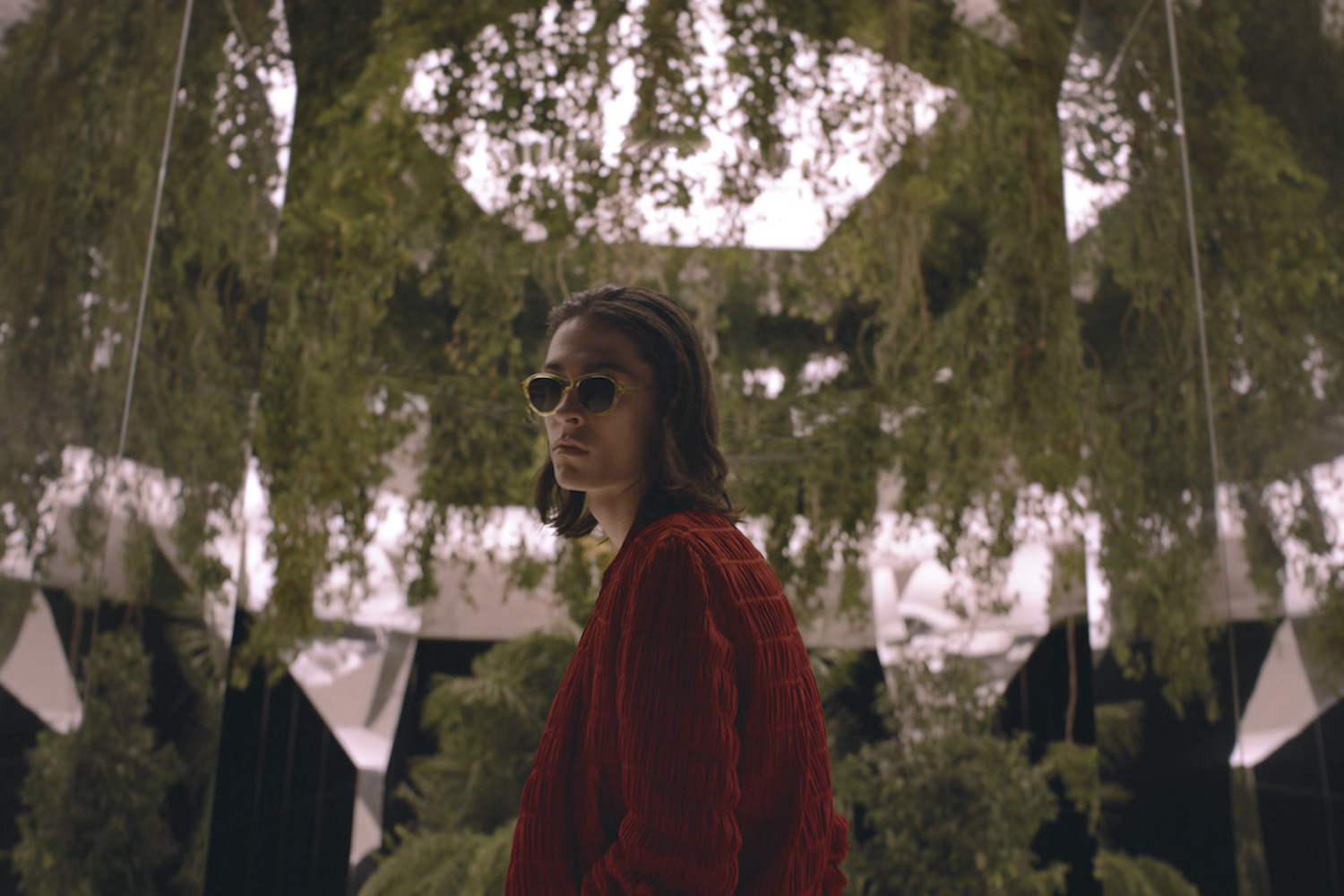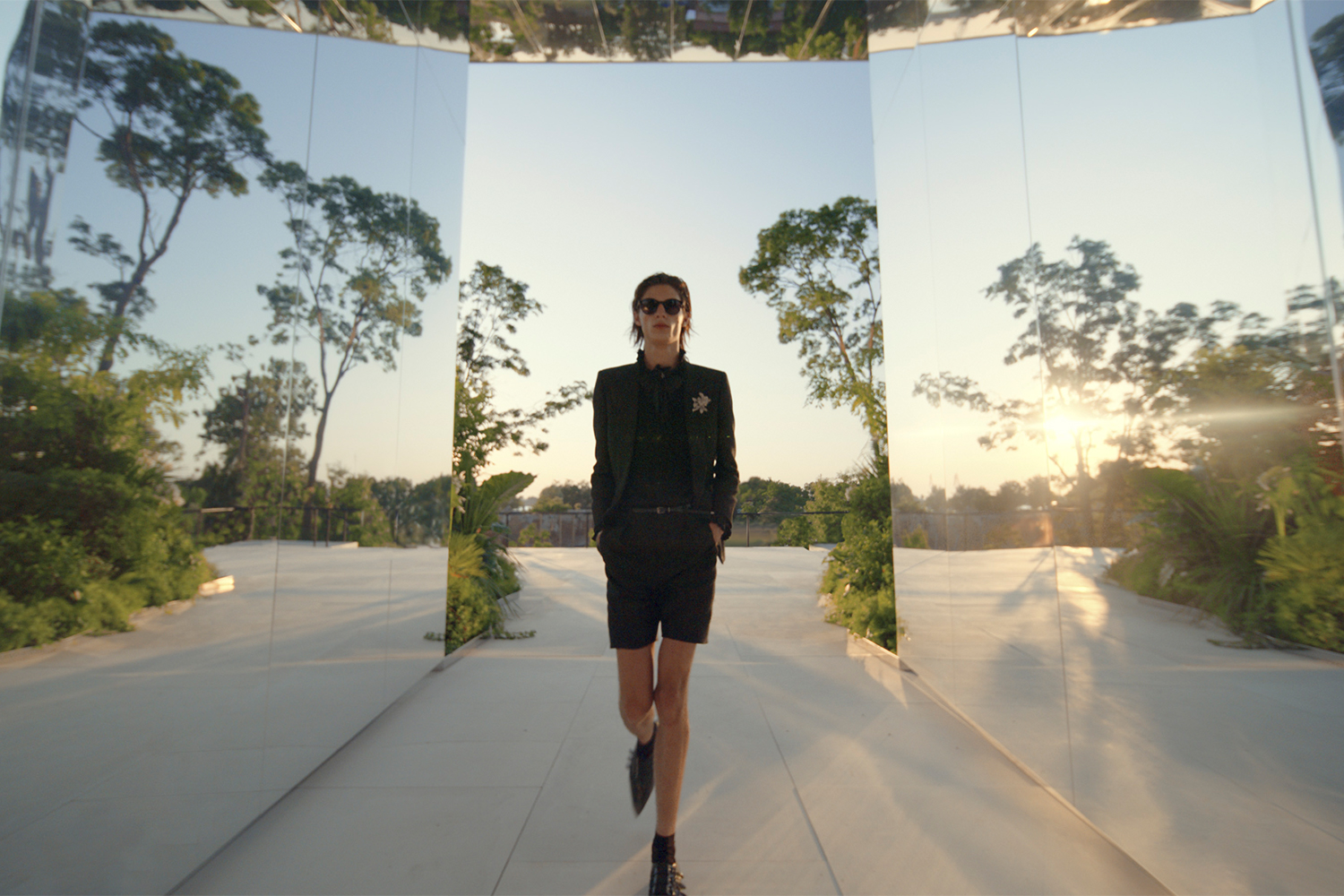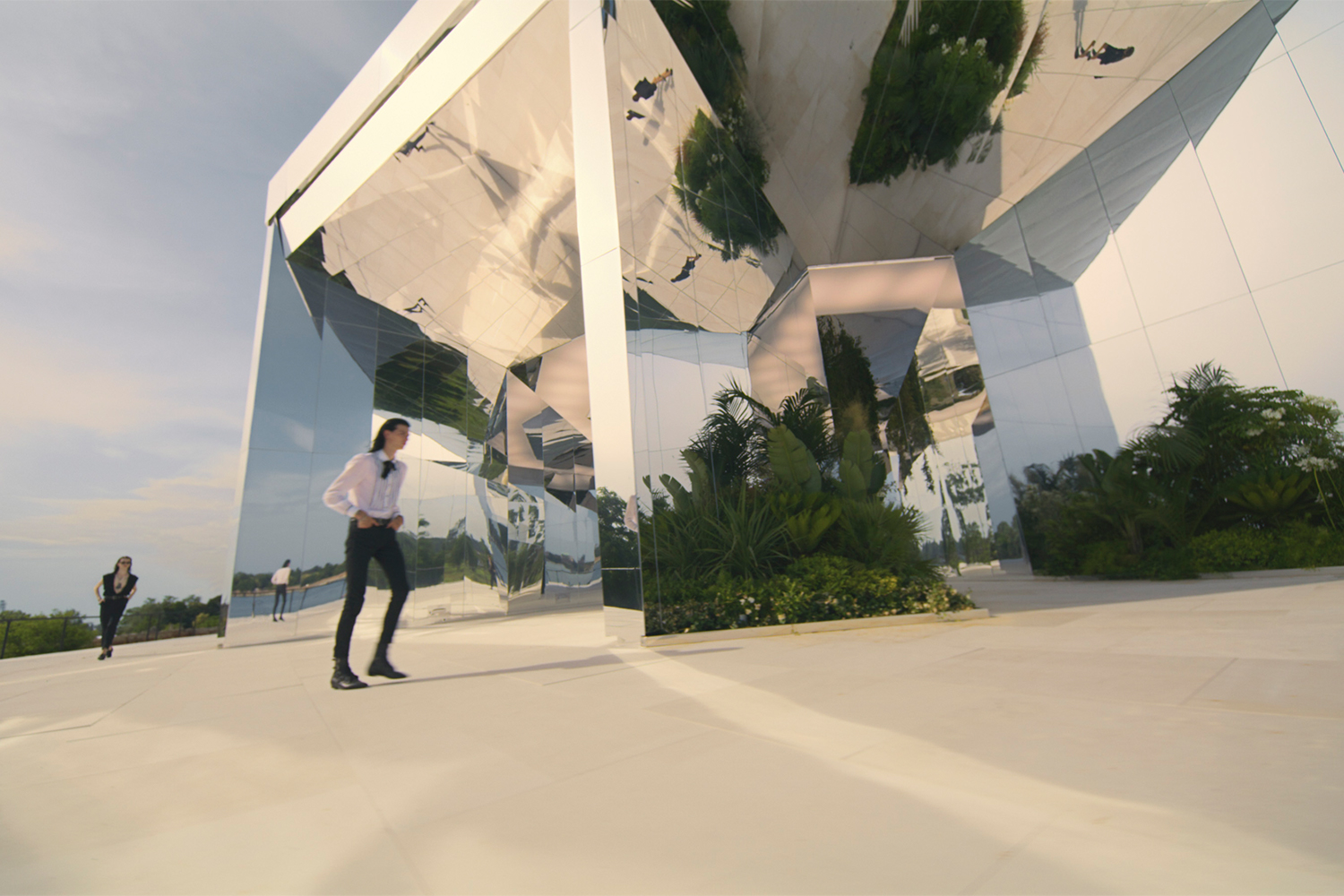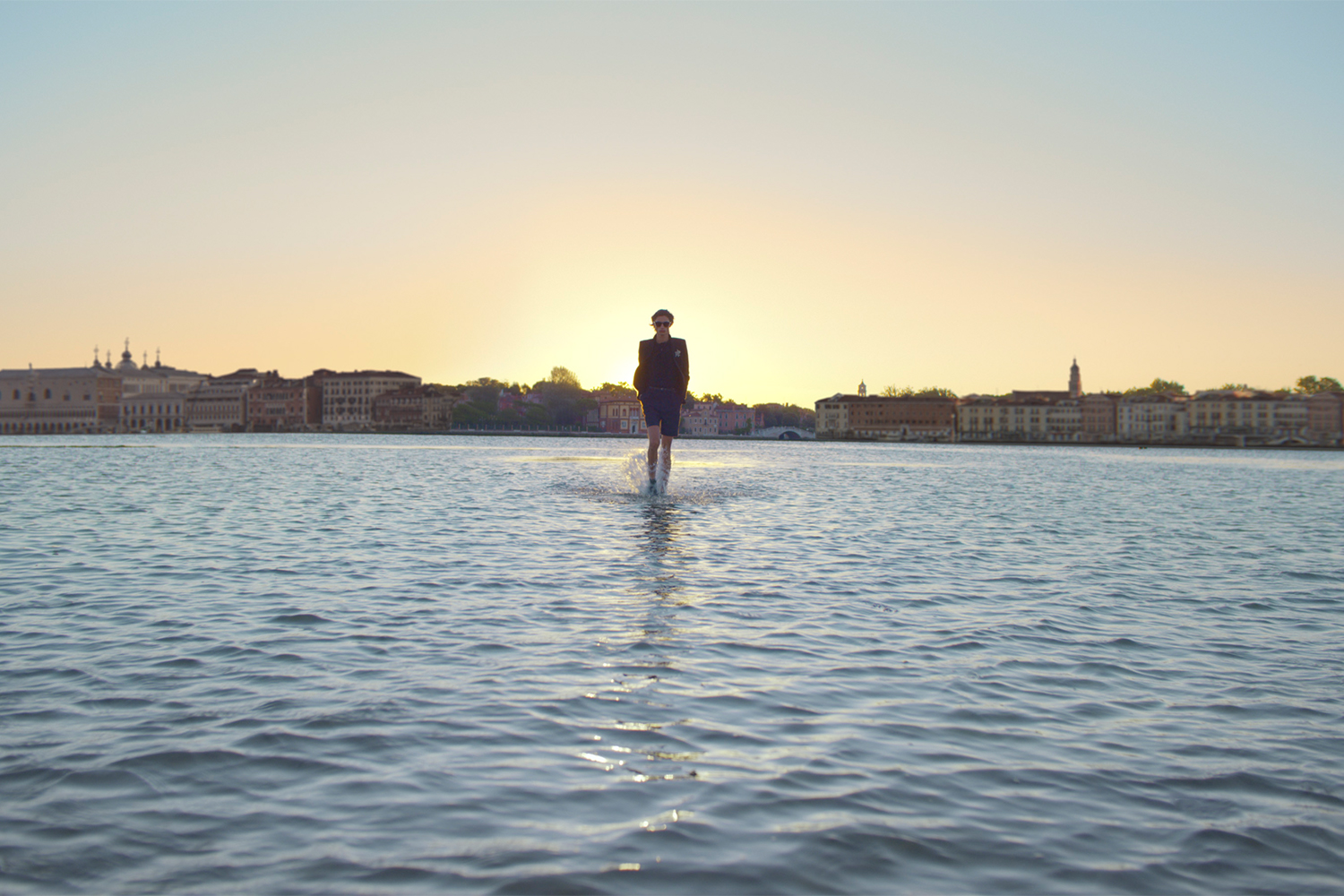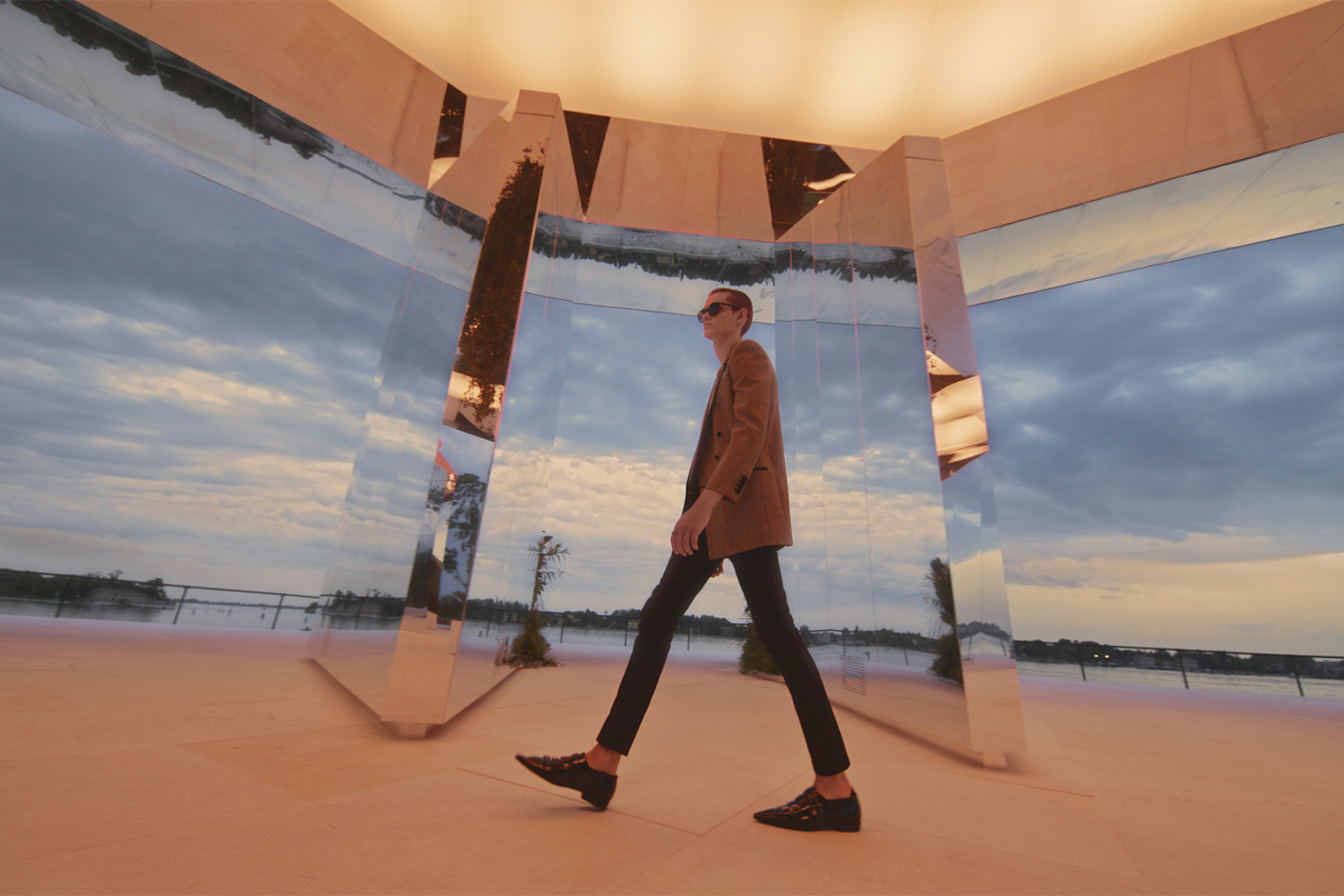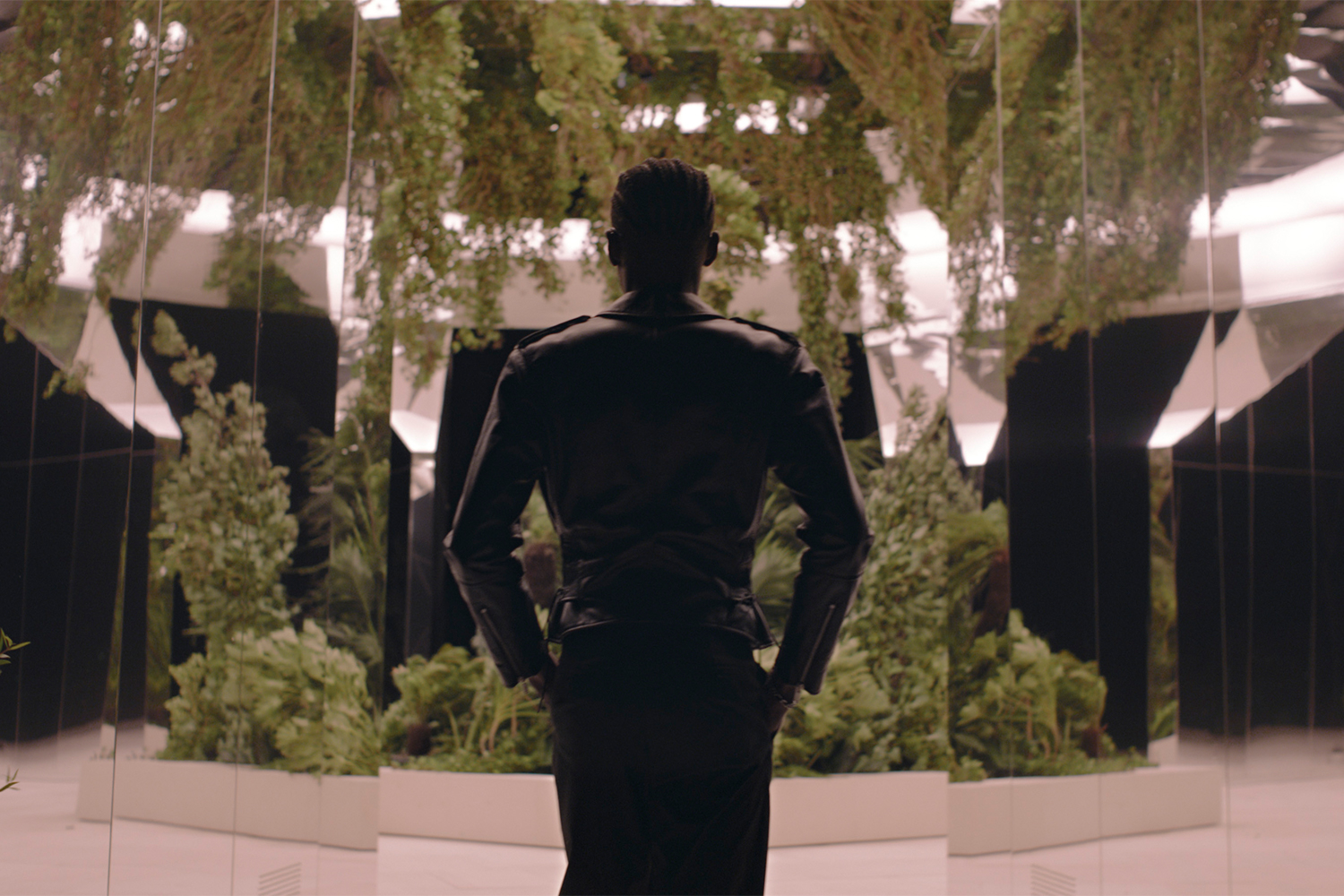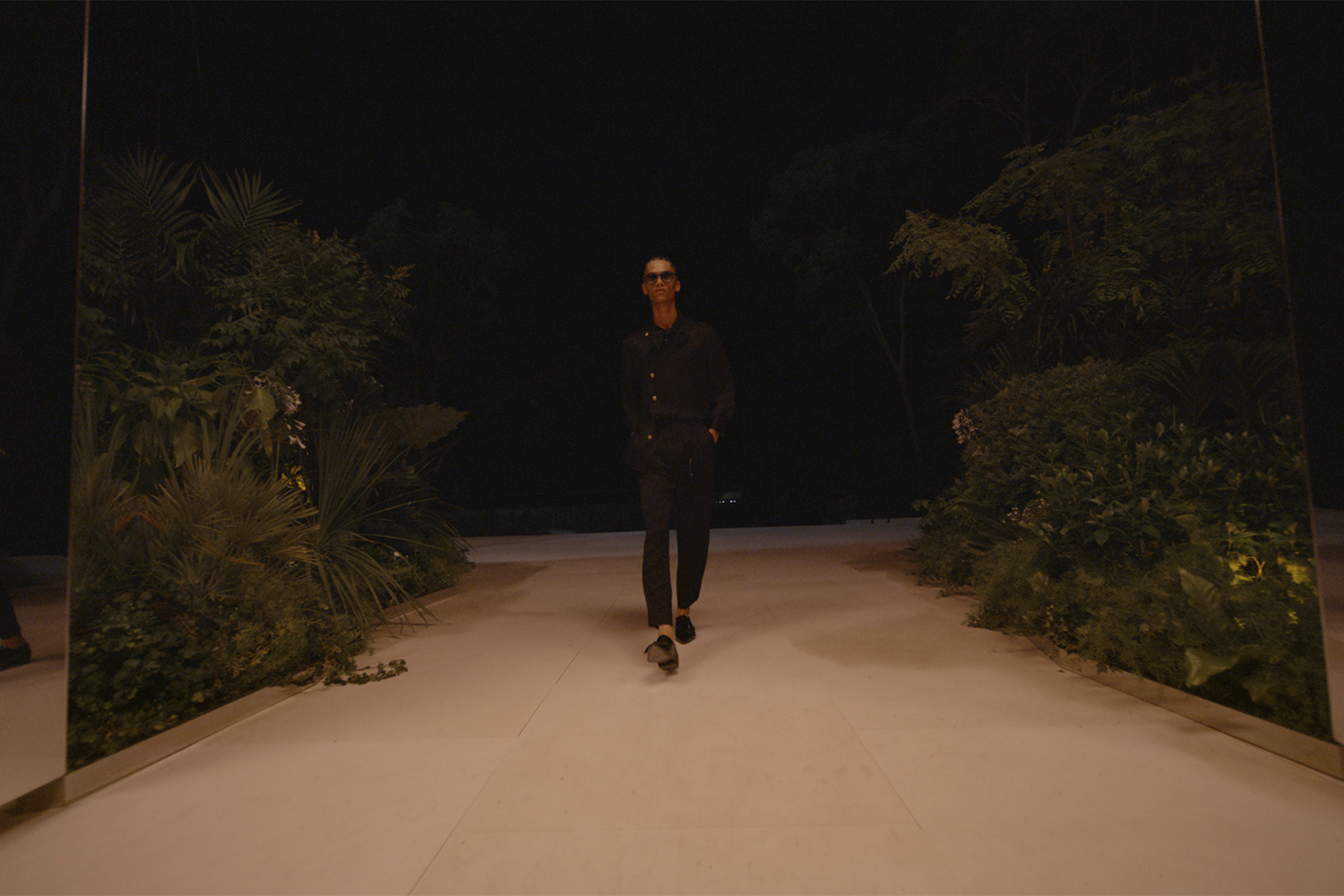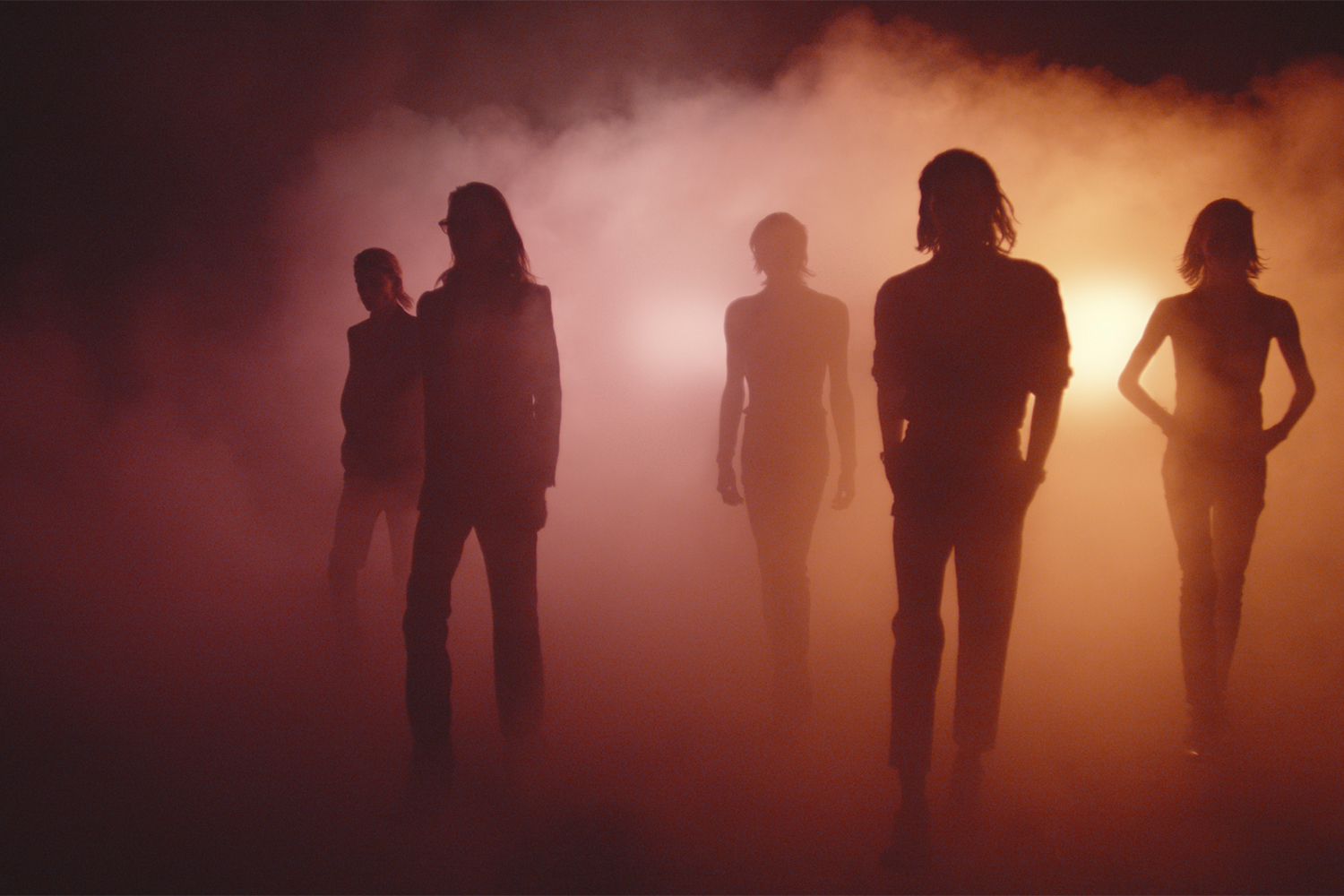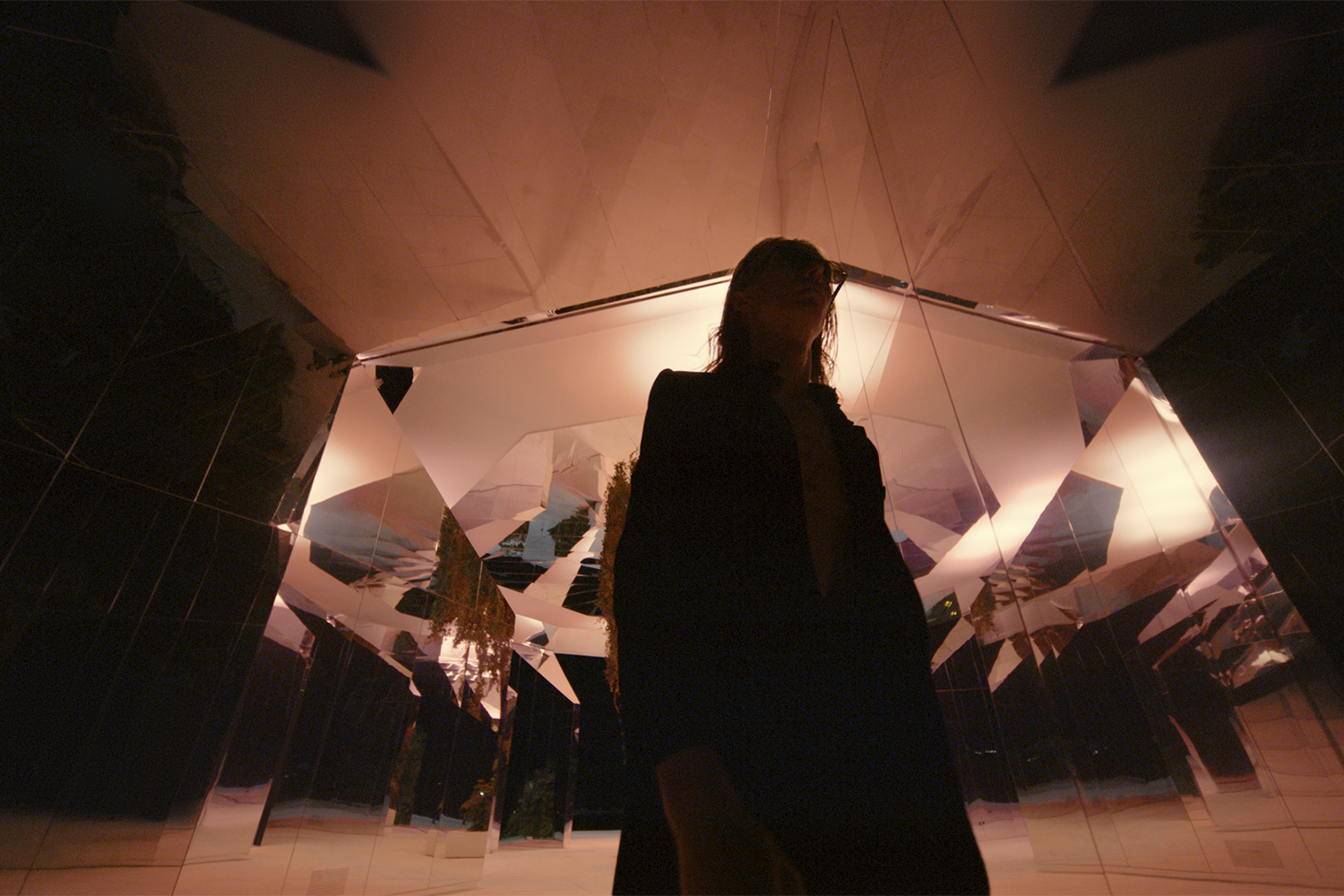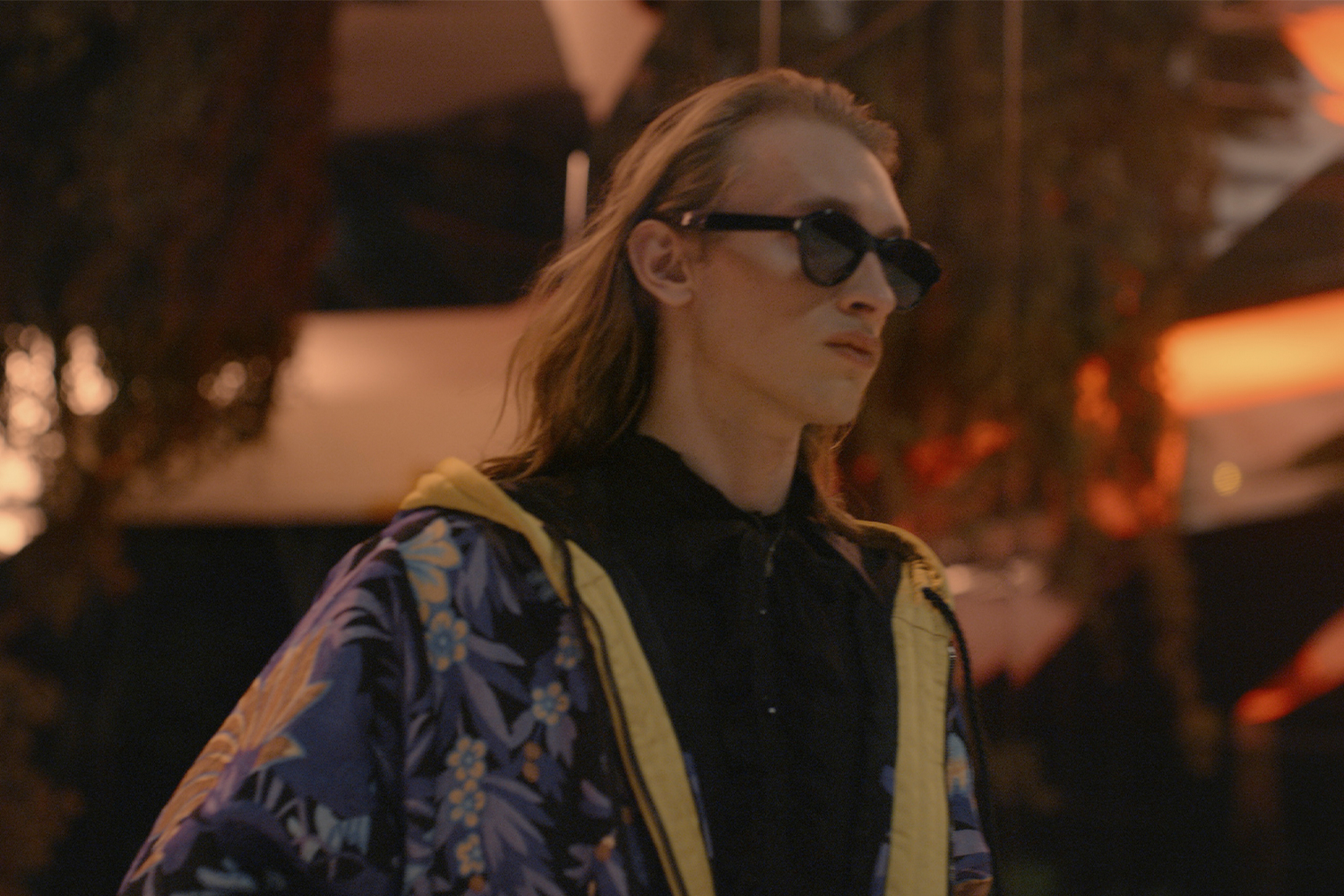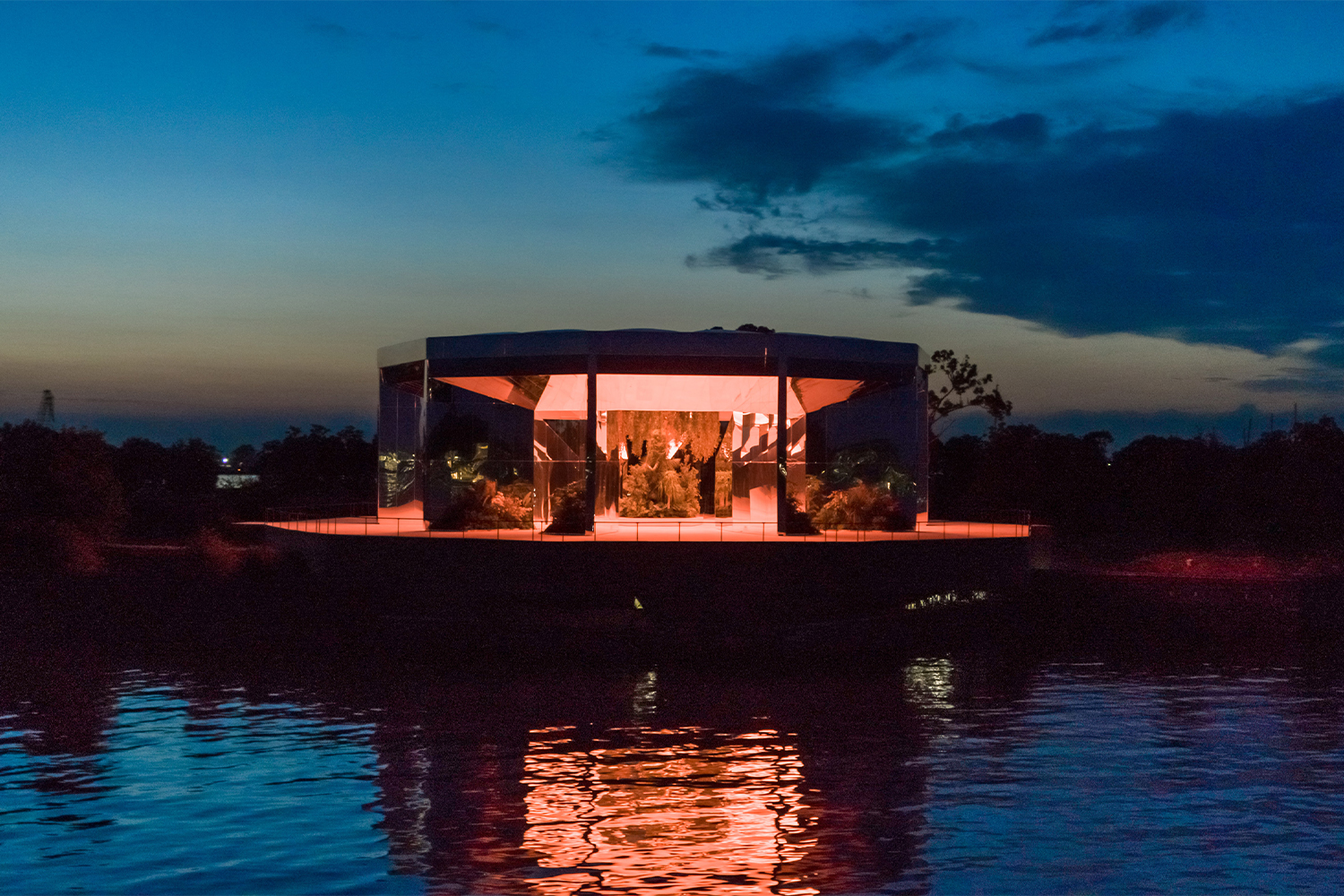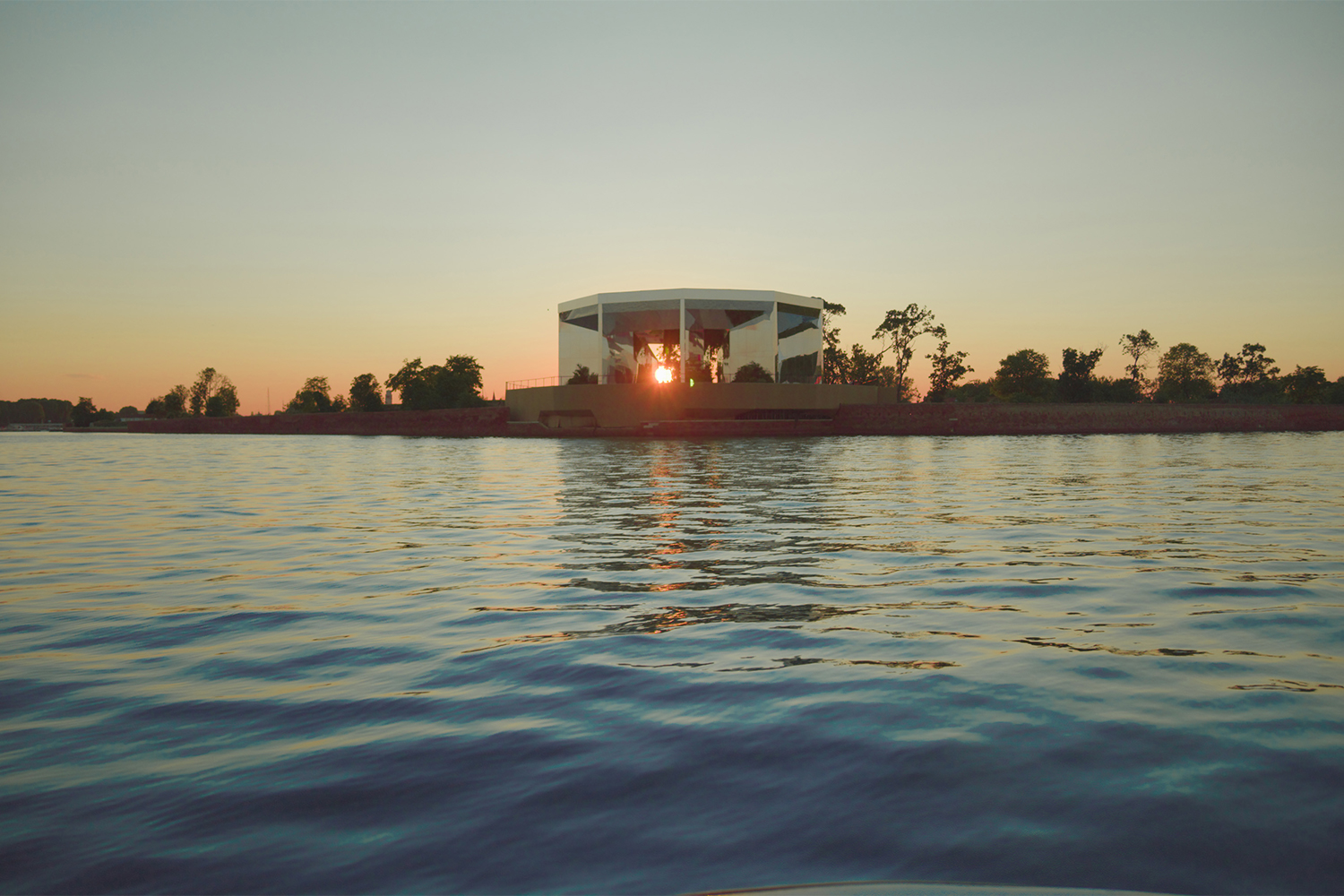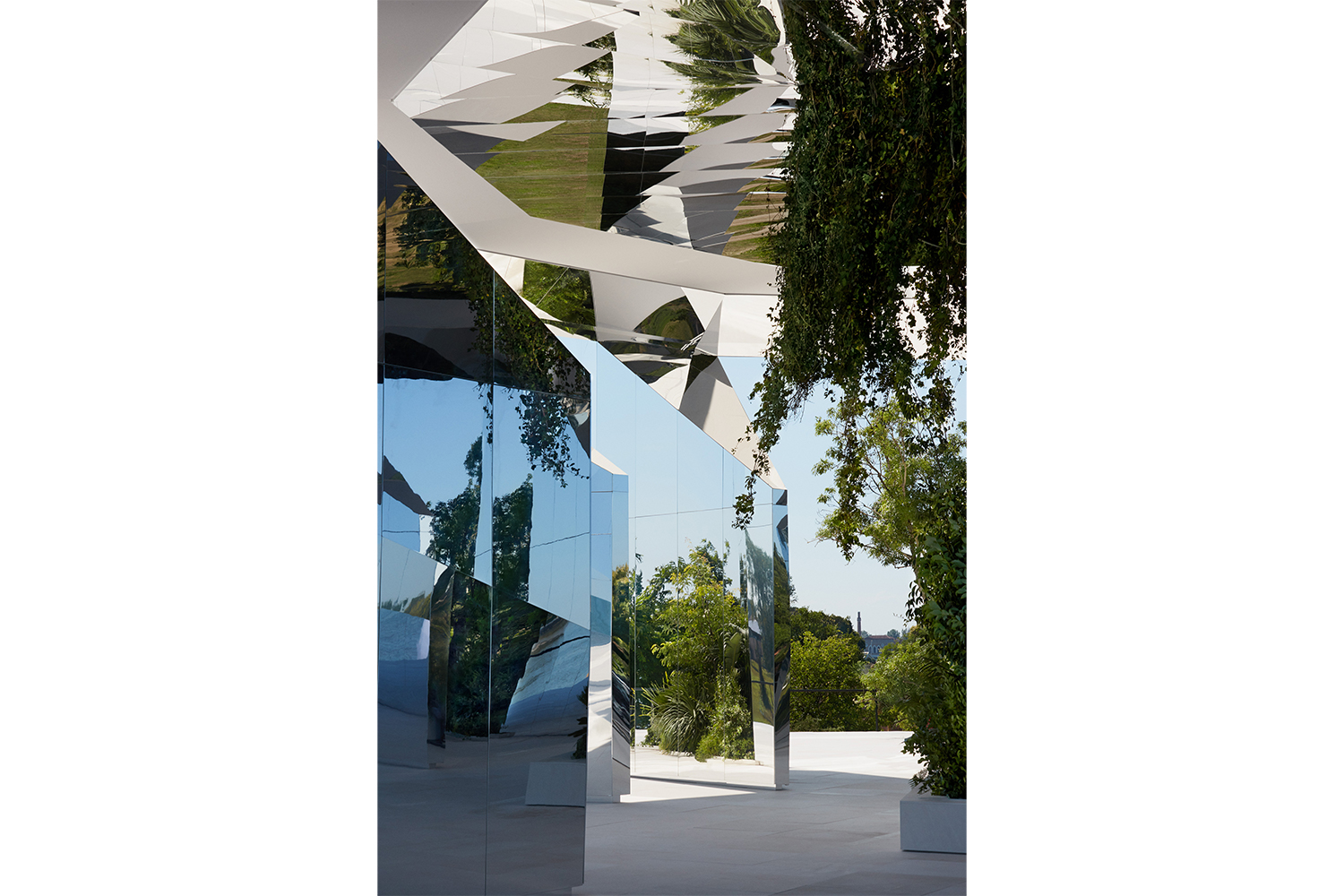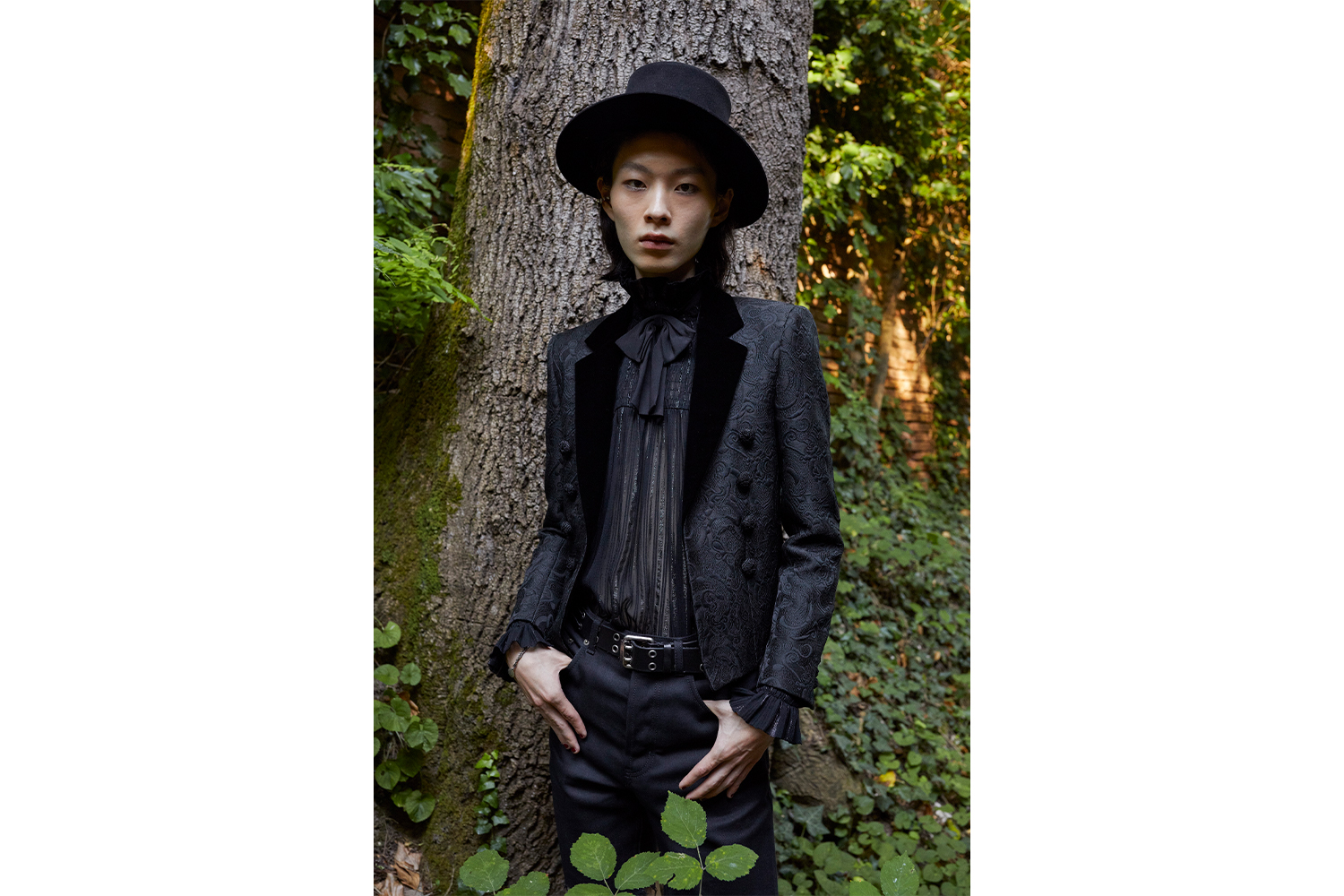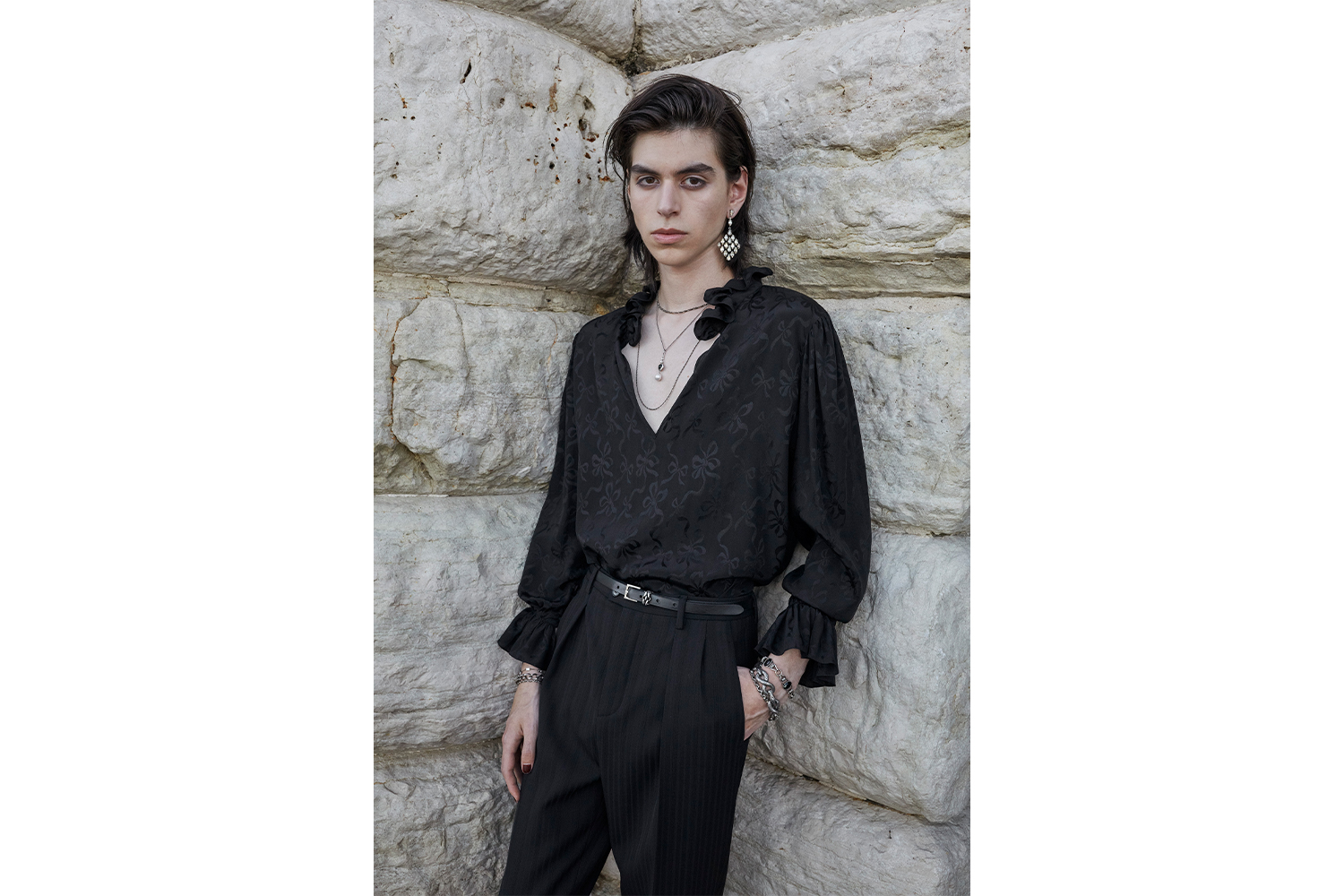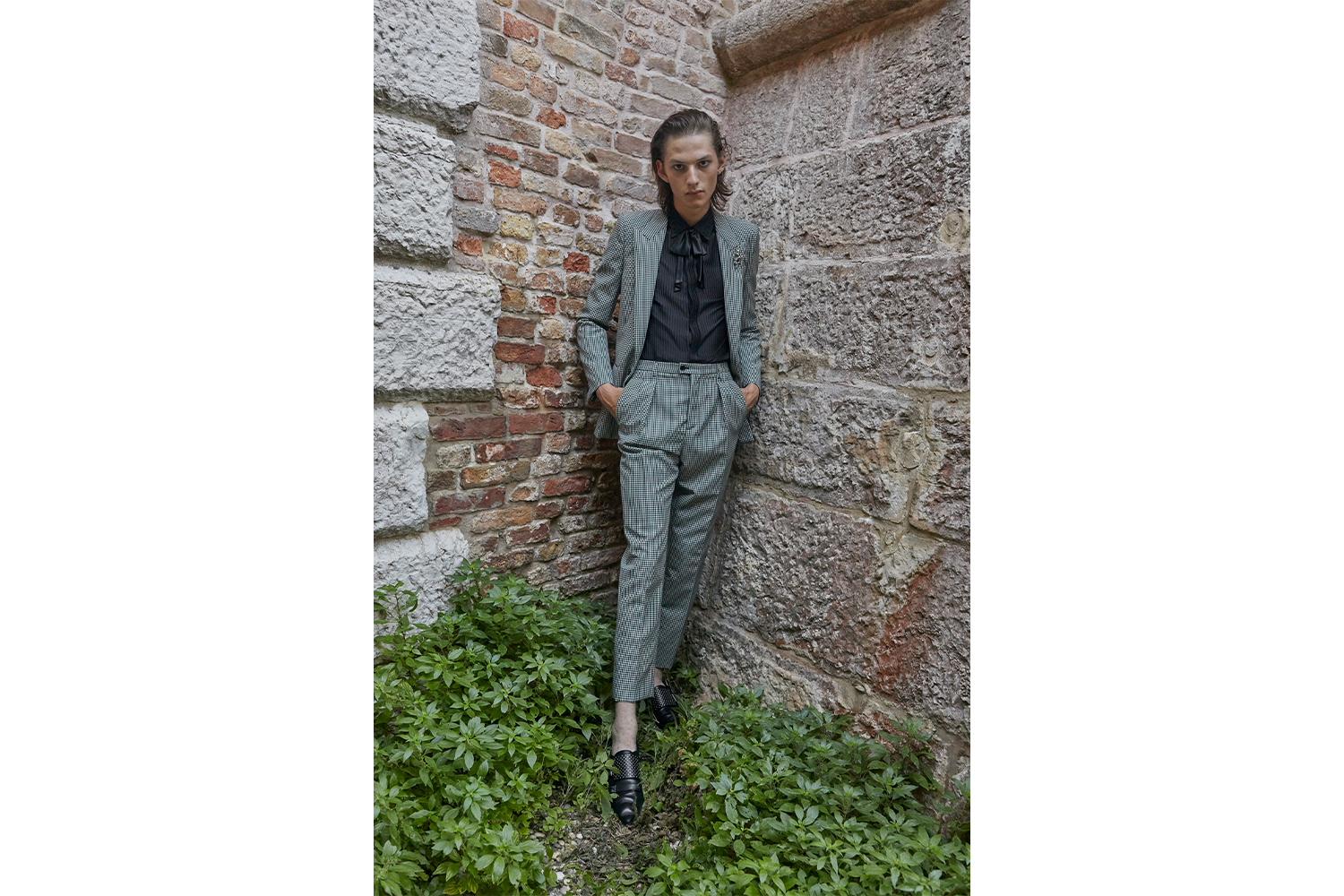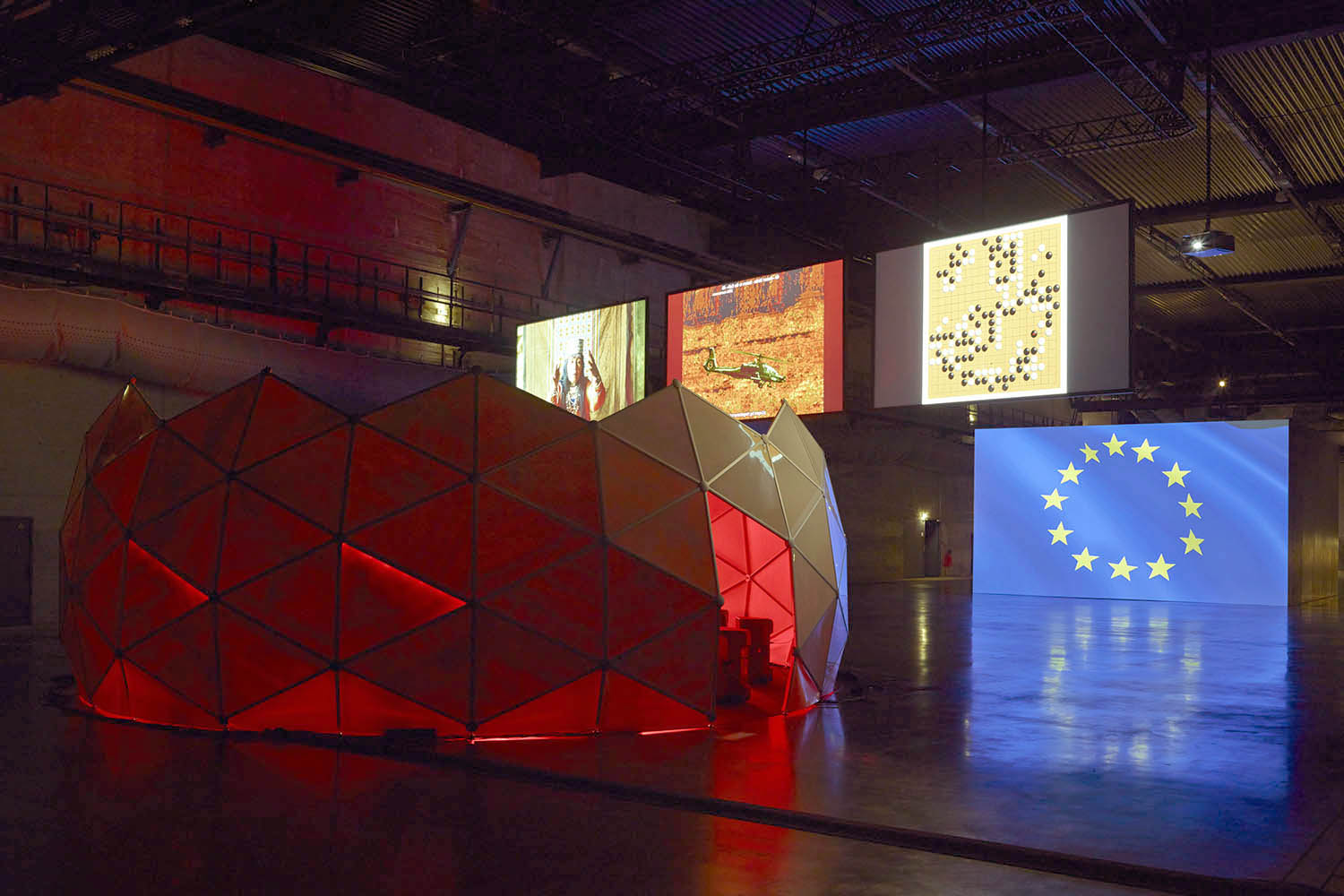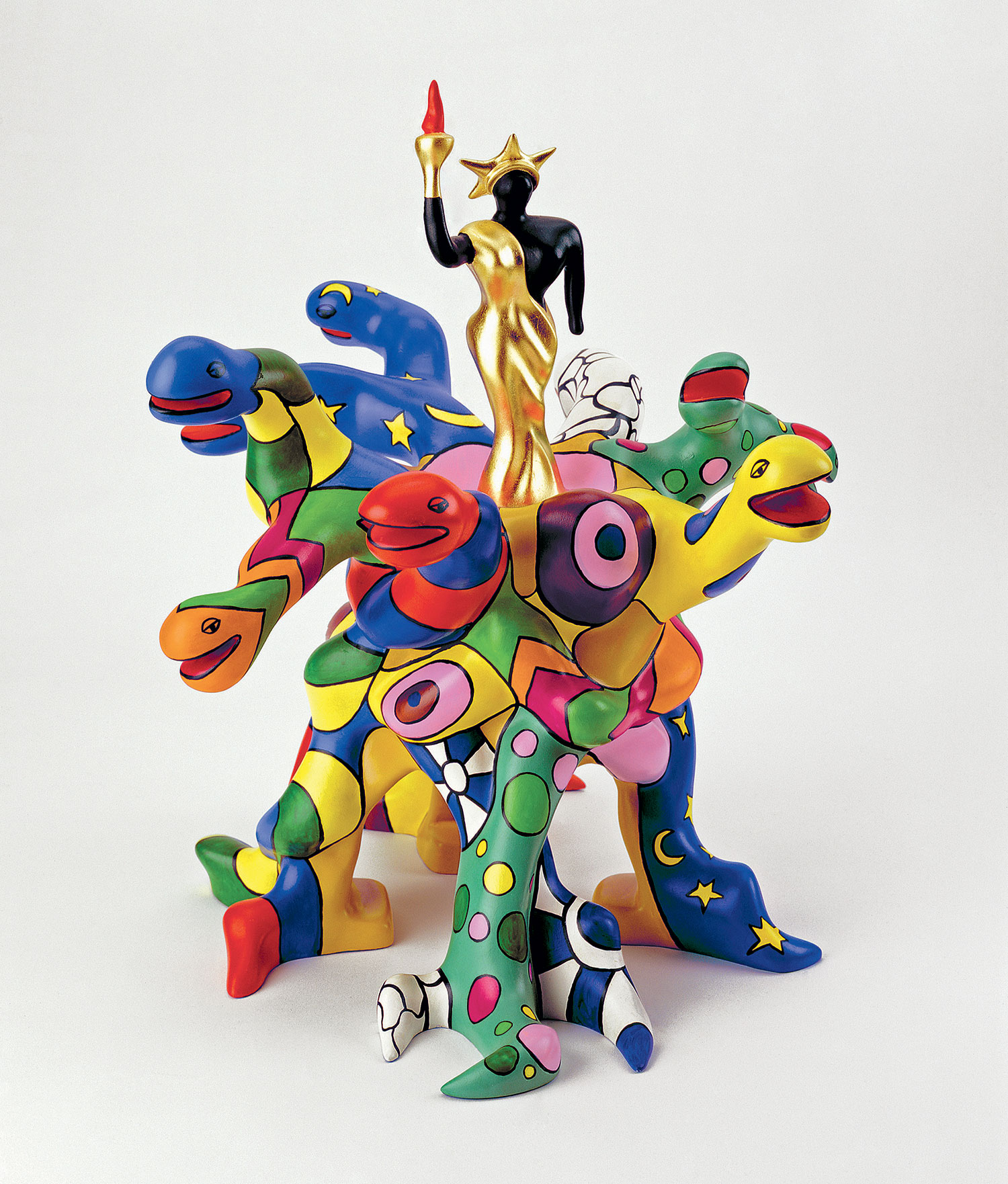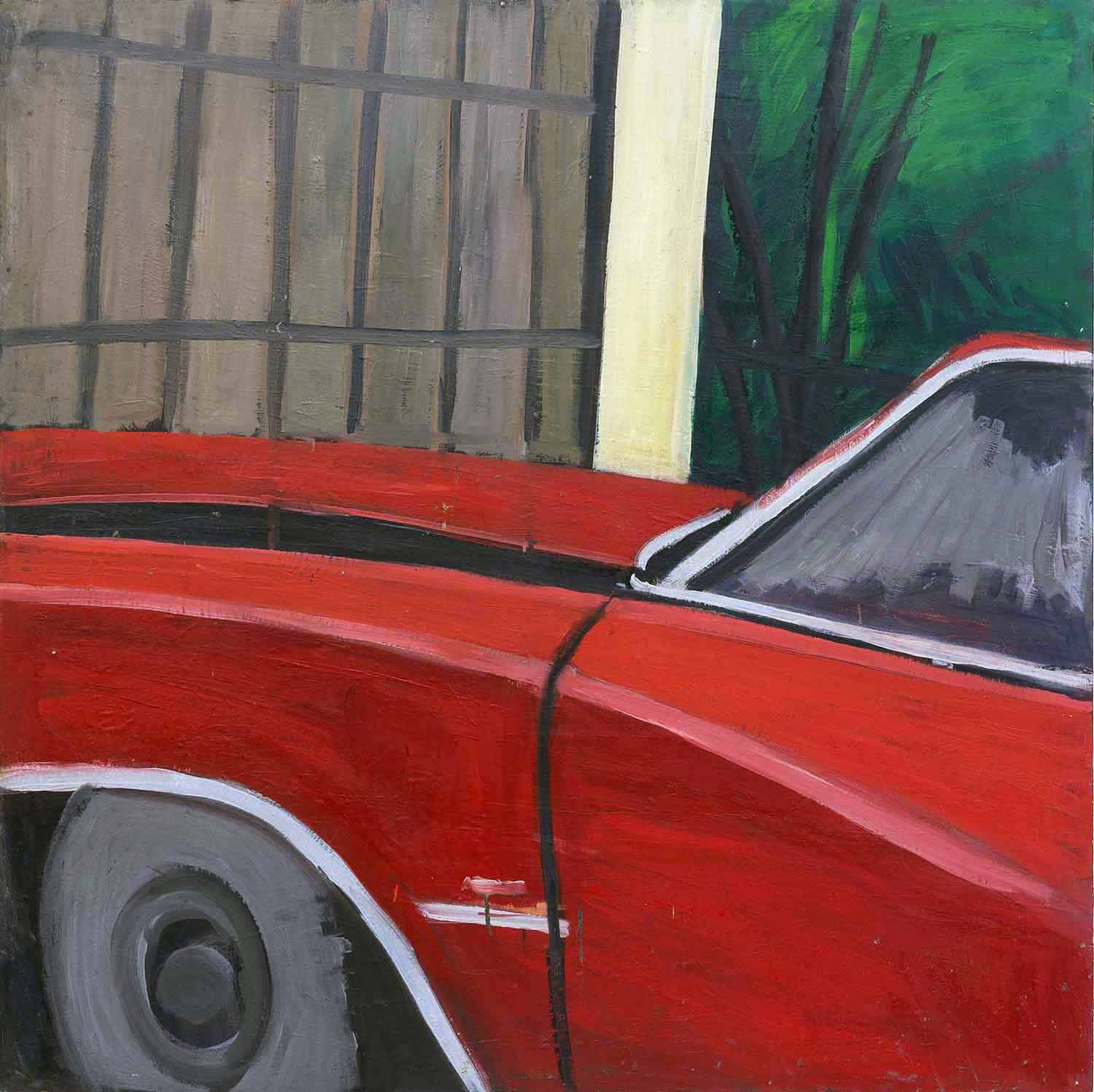The sky’s many color transitions at the Isola della Certosa in Venice are made even more complex via the mirrors of Doug Aitken’s Green Lens (2021) installation, conceived specially to host Saint Laurent’s S/S 2022 show.
Visitors are invited to walk through and around a plant-filled mirrored structure that somehow suggests a seventeenth-century European theater. Traversing this vertiginous landscape evokes simultaneous feelings of wonder, loss, alienation, and renewal.
La Certosa, an island in the Venetian Lagoon in the north-east of Venice that has been undergoing extensive redevelopment and agricultural restoration, seemed to be the perfect place to welcome a platform such as Green Lens, which kaleidoscopically interacts with the new growth and greenery.
Central to the preparation of every Saint Laurent event is a commitment to use local materials and equipment that afterwards are either reused, recycled, or donated in support of artistic and cultural projects. All greenhouse gas (GhG) emissions related to the event are offset through reforestation programs specifically dedicated to the Isola della Certosa garden, respecting its original ecosystem in collaboration with local environmental specialists. All plants living within Green Lens will be replanted, in addition to those that Saint Laurent will be donating to Isola della Certosa as part of the reforestation program and restructuring project that will make the cloister ruins accessible again to locals and international visitors. Saint Laurent will also rebuild the wall of Certosa that was damaged in 2019.
By sunset, with the help of several shades of pink and purple from the sky, the show began. Green Lens became a dynamic structure, with ghostly creatures moving in all directions before a fully immersed, transfixed public.
On this occasion Doug Aitken was interviewed in Venice just before the event.
Gea Politi: What was the starting point for Green Lens? What were your influences?
Doug Aitken: Before starting this project, I thought to myself, “Where can art go?” We have inherited art, and art from the past is dynamic, and I realized that the majority of it is about completion. It is about art, but also about the execution of it. For example, a glass of water is emptied, however you are never meant to touch it or to use it — it stays as it is, a frozen piece of culture. I want the ice age of culture to thaw. I want culture to come to life, and projects like this are looking at other possibilities to see where art can go, what it can do and where it can be, but also its life cycle. It can burn hot, quick, or it can be infinite. I believe that in this installation there is no hierarchy to it; it is singular in the sense that you can be alone and have a kind of existential moment, or it can be completely inclusive and have a crowd of people there and performances in it and around it. The architectural design of the piece shows no entryway or exit. Everything is universal. You can walk thought it, outside it, around it. But really the work is also botanical and is growing all the time. In daytime it harnesses the sunlight to expand its footprint, to become greener. In the afternoon you can see the clouds rushing while you see the ocean rising and falling with the tide. They all become part of the field of vision, so it is not a hermetically sealed immersive installation. Instead, it’s the exact opposite. Turning the idea of the artwork outward, entering inside-out, so that the viewer instead is really empowered. It’s as if it’s your work, you are the author, you are the creator of the field in real time — as opposed to being fed or projected something. Therefore, I simply became fascinated with the idea.
GP: How did you choose the location for the project?
DA: The history of the island is quite interesting. In the past this location was a munitions place for weapons and storage. Eventually, in the 1960s, it became abandoned due to its high levels of toxicity. The location showed a postapocalyptic landscape when some of the pieces got removed. Venice has a beautiful archipelago that expresses this sensation of “forgotten and forbidden,” as if it is scorched. That is when I selected the location for this project.
Artworks are often temporary, and this installation will obviously not always be there. Therefore, we have worked as a collaboration with the island. All of the vegetation in the sculpture will be planted around the island and will start growing. So essentially, the artwork exists in this form now and then it will dissolve into the earth and then rise up and become part of the ecosystem for as long as possible.
GP: Fashion and artistic directors are now more than ever becoming content producers. Do you feel that this connection with art is getting more subtle or more necessary? Your work enters Anthony Vaccarello’s work and vice versa, although your work remains. What do you think about it?
DA: I feel that this project is almost a wedged reality; it is a sculpture, a moment in time, an installation, a platform for an individual or a collective group. I am deeply interested in this idea of sculpting time, and to me it’s one of the values of art, especially in this (almost) post-pandemic moment. I constantly ask myself where we are going, what decisions do we make, ethically, culturally, as individuals, or as a society. I am focusing on the present and the future, and I believe that I intended to make this work. In fact, I conceived this work during quarantine, and to have the work presented during this period demonstrates a larger dialogue: that we can finally be in the same space.
GP: Were you thinking of this ahead of Saint Laurent — creating this kind of idea for an organic platform?
DA: Specifically, with this work I was very interested in the present. When an individual enters the installation when nobody is around, the narrative of the work is the present. Everything around it becomes it through the reflections. Sound is also a major component of the work. I made a composition recorded entirely from the sounds of the island, where you can hear insects, the wind, and the movement of water. The sound of the island is made into a composition of the present.


